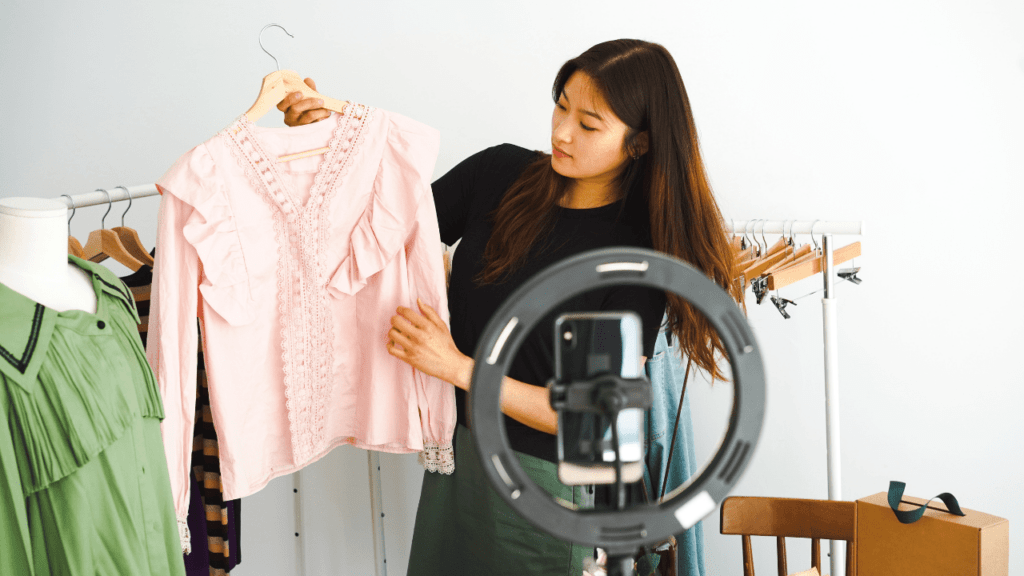Are you looking to make some extra money by selling clothes? Whether you’re a small business owner or an individual wanting to declutter your wardrobe, selling clothes can be a lucrative venture. However, with the growing competition in the online marketplace, it’s essential to know how to sell clothes and stand out to attract buyers. In this article, we will guide you through the process of selling clothes successfully. From finding the right platform to optimizing your listings, we’ve got you covered.
Finding the Right Platform
Before you start selling clothes, it’s crucial to choose the right platform that aligns with your goals and target audience. Some popular options include online marketplaces like eBay, Amazon, and Etsy, as well as dedicated fashion platforms like Depop, Poshmark, and ThredUp. Research each platform’s fees, policies, and user base to determine which one suits your needs best.
Curating Your Inventory
To maximize your sales, it’s important to curate a well-balanced inventory. Consider your target market and research current fashion trends to ensure you offer items that are in demand. A mix of popular brands, unique pieces, and affordable options can attract a wider range of customers. Regularly update your inventory to keep it fresh and exciting.
Captivating Product Descriptions
When it comes to how to sell clothes online, compelling product descriptions can make all the difference. Use vivid language to highlight the key features, fabric quality, and fit of each item. Be sure to include accurate measurements and sizing information to avoid customer dissatisfaction.
Additionally, incorporate relevant keywords in your descriptions to improve search engine visibility. By crafting engaging and descriptive product descriptions, you can capture the attention of potential buyers and entice them to make a purchase. Remember to emphasize the unique selling points of your clothes and create a sense of desire and urgency.
Whether it’s the softness of the fabric, the flattering silhouette, or the versatile styling options, paint a vivid picture with your words to help customers envision themselves wearing the item. Additionally, consider using sensory language to appeal to the senses and create a more immersive shopping experience.
High-Quality Visuals
Good product photography is essential for showcasing your clothes in the best light. Invest in a decent camera or smartphone with a high-resolution camera. Capture clear, well-lit images from different angles to provide a comprehensive view of each item. Consider using a mannequin or a model to demonstrate how the clothes fit. Don’t forget to edit your photos to enhance their visual appeal.
Pricing Your Items Strategically
Determining the right price for your clothes can be a balancing act. Research the market value of similar items to get an idea of their average selling price. Consider factors such as brand, condition, and rarity when setting your prices. Additionally, offering occasional discounts or running promotions can attract buyers and increase your sales.
Effective Marketing and Promotion
To drive traffic to your listings and increase sales, you need to actively market and promote your clothes. Utilize social media platforms like Instagram, Facebook, and Pinterest to showcase your inventory and engage with potential customers. Collaborate with fashion influencers or bloggers to reach a wider audience. Consider running targeted online ads to boost your visibility.
Building Trust and Credibility
Establishing trust with your customers is vital for long-term success. Provide accurate and detailed information about your clothes, including any flaws or imperfections. Offer a hassle-free return policy and address customer concerns promptly and professionally. Encourage satisfied customers to leave positive reviews to build credibility and attract new buyers.
Providing Exceptional Customer Service
Delivering excellent customer service is key to maintaining positive relationships with your buyers. Respond to inquiries and messages promptly, addressing any concerns or questions they may have. Package your items securely and ship them promptly. Going the extra mile to provide a pleasant buying experience can lead to repeat business and positive word-of-mouth recommendations.

Handling Returns and Refunds
Even with the best intentions, returns and refunds are sometimes unavoidable. Create a clear and fair return policy that protects both you and the buyer. Clearly communicate your policy on your listings and address return requests promptly. Handle refunds professionally and promptly process returns to maintain customer satisfaction.
Analyzing and Adjusting Your Strategy
Regularly assess your sales performance and evaluate the effectiveness of your selling strategies. Track your sales data, including popular items, customer demographics, and conversion rates. Analyze the data to identify patterns and make informed decisions on pricing, inventory management, and marketing efforts. Adapt your strategy accordingly to optimize your sales.
Expanding Your Reach
As you gain experience and confidence in selling clothes, consider expanding your reach to reach a broader customer base. Explore international shipping options to attract buyers from different countries. Research wholesale opportunities to source clothing at lower prices. Attend local fashion events or set up pop-up shops to connect with customers offline.
Leveraging Social Media
In today’s digital age, social media platforms offer immense opportunities for promoting your clothing business. Create engaging content, such as outfit inspiration, style tips, and behind-the-scenes glimpses. Encourage user-generated content by featuring customer photos or hosting contests. Engage with your followers regularly to build a loyal community and increase brand visibility.
Collaborating with Influencers
Partnering with fashion influencers can significantly amplify your reach and brand exposure. Identify influencers whose style aligns with your brand and target audience. Reach out to them with collaboration proposals, such as sponsored posts, try-on hauls, or affiliate partnerships. Influencers’ endorsements can help build trust and attract new customers to your online store.
Optimizing for Search Engines
To ensure your listings appear in relevant search results, optimize your content for search engines. Incorporate relevant keywords in your titles, descriptions, and tags. Research popular search terms and incorporate them naturally into your content. Regularly update your listings to stay current with search engine algorithms and increase your chances of ranking higher.
Staying Ahead of the Competition
In the ever-evolving world of online fashion sales, it’s essential to stay ahead of the competition. Stay informed about emerging fashion trends and adjust your inventory accordingly. Monitor your competitors’ strategies and identify opportunities for improvement. Innovate and offer unique selling propositions to differentiate yourself from others in the market.
Conclusion
Selling clothes online can be a rewarding and profitable endeavor when you know how to sell clothes effectively. By following the steps outlined in this guide, you’ll be well-equipped to navigate the competitive landscape and attract buyers to your online store. From finding the right platform to optimizing your listings and engaging with customers, every aspect plays a crucial role in your success.
Read also: Stationery franchise: 7 Best ideas to open
Eu sou Luana Martins, uma apaixonada pelo universo da decoração e do design de interiores. Como fundadora e responsável pelo site “Dica para Casa”, me consolidei como referência no segmento, oferecendo um espaço online repleto de inspiração e orientações para transformar casas em lares acolhedores e funcionais.

